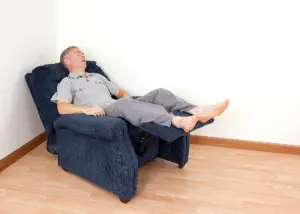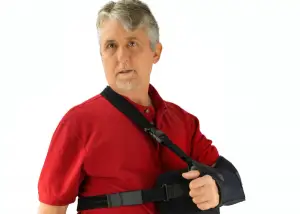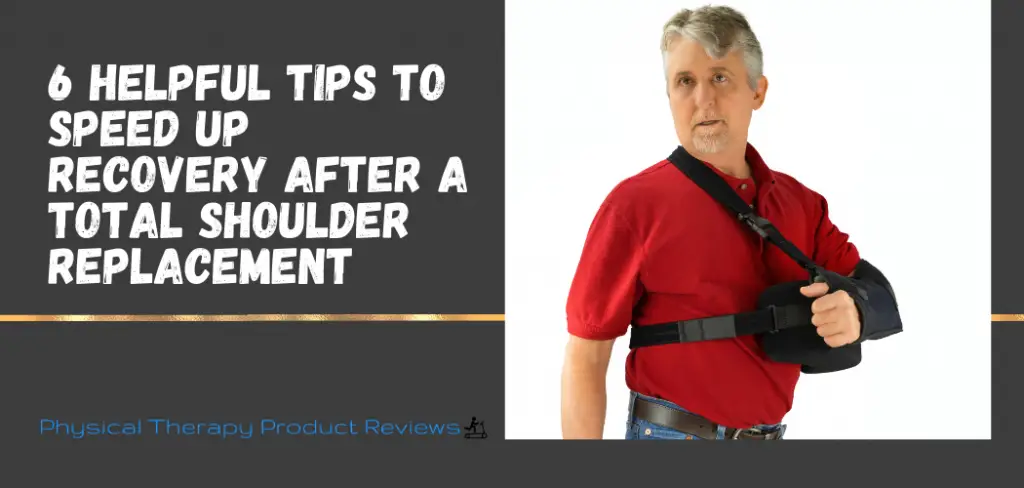 Total shoulder replacement surgery is often the best option for patients suffering from a serious shoulder injury or pain caused by degenerative arthritis. Your doctor will remove the damaged joint during a total shoulder replacement and replace it with prosthetic pieces. If this sounds like a traumatic experience, that’s because it is.
Total shoulder replacement surgery is often the best option for patients suffering from a serious shoulder injury or pain caused by degenerative arthritis. Your doctor will remove the damaged joint during a total shoulder replacement and replace it with prosthetic pieces. If this sounds like a traumatic experience, that’s because it is.
A total shoulder replacement ultimately results in a healthier, stronger shoulder joint. However, it’s not a quick fix and your doctor can’t do all of the work for you. Here are some things you’ll need to do to ensure the best outcomes of your total shoulder replacement surgery.
Do Exercises Before the Shoulder Replacement to be Prepared
While it may seem daunting, or too painful, doing exercises to strengthen your shoulder, neck, and back before your total shoulder replacement surgery can help make your recovery easier.
Elbow Flexion
- Start in a seated position at the edge of a chair.
- Let your arms rest next to you.
- Slowly bend your surgical arm at the elbow, bringing your hand up towards your shoulder.
- Slowly lower your arm back down to rest for five seconds.
- Repeat ten times, three times a day.
Video Link: Active Elbow Flexion and Extension
Ball Squeezes
- Using a foam ball or rolled-up socks, rest your hand on your leg.
- Squeeze the ball or socks, holding for one second.
- Relax your hand.
- Repeat 15-20 times, up to three times a day.
Video Link: Ball squeeze in sling exercise
Shoulder External Rotation
- Using a cane or light broom handle, you can start in a sitting or standing position.
- Grasp the can with both hands placed slightly wider than shoulder-width.
- With your elbows bent at a 90-degree angle, relax your surgical arm. Just use it to hold onto the cane.
- Use your other arm to move the cane, bring it across your body in the direction of your belly button.
- Keep your elbows tucked in at your side while you move towards and away from your center.
- You may feel some stretching, but do not push in a way that causes pain.
- Repeat ten times, 3 times per day.
Video Link: shoulder external rotation with cane
Shoulder Pendulums
- Start in a standing position, bend slightly at the waist, and use your non-surgical arm to balance using a counter or chair back.
- Relax the muscles in your surgical arm and allow gravity to pull it forward.
- Slowly shift your weight from foot to foot, keeping your surgical arm relaxed.
- Allow your surgical arm to gently swing side to side.
- Repeat 10 times.
- Shift your feet so one is in front of the other.
- Now shift your weight from front to back and allow your surgical arm to sway back and forth gently.
- Repeat 10 times.
Video Link: Pendulums
Find a Comfortable Sleeping Position to Speed up Healing
After your total shoulder replacement surgery, it’s important to find a safe and comfortable sleeping position. Your body needs rest, and your shoulder needs to stay in a position that promotes healing.

You are required to wear a sling at all times, including at night, to keep their shoulders immobilized. Many people find a recliner is the most comfortable way to sleep after total replacement surgery, if this isn’t an option for you, consider these tips.
- Place pillows around you to discourage rolling in your sleep.
- Once you lay down, look to see if your elbow is visible. If it’s not, have someone prop some pillows under it until it is. This ensures your shoulder is in what therapists call the plane of the scapula, it decreases stress on the front of the shoulder and keeps your joint aligned.
Try to Walk and Get Daily Exercise After Surgery
After your total shoulder replacement surgery, you’ll probably be nervous about anything that could cause movement in your shoulder. However, most doctors agree that “passive movement” is necessary to promote healing while preventing tightness in the joint.

What’s passive movement? Firstly, you’ll need to wear your sling around the clock. While wearing your sling, you can start to do things like walking and even riding a stationary bike after the first week to ten days. However, it’s best to avoid ellipticals or treadmills, since it’s easy to lose your balance on them.
This movement of your body will prevent shrinking and tightening in the joint, which will lead to a stronger, more flexible joint once you’re all healed up.
Stay Ahead of the Pain After Surgery
Don’t wait for the pain to catch up to you, consider some of the following to stay ahead of it:
- Your doctor will prescribe you pain medication. Always take it as instructed.
- Ditch the messy ice packs for something much more convenient. This Pain Management Therapy Machine provides targeted cooling therapy and has a five-foot flexible tube and a large, flexible therapy pad for ultimate comfort and cooling.
- Consider using a muscle massager to help with the aches and pains associated with a total shoulder replacement.
- While it might go against every instinct, it’s important to keep moving after shoulder replacement surgery. Staying in one position for too long will result in stiffening of the joint.
Learn How to Adjust the Sling - You'll Do it Daily
You’ll need to wear your sling all day and night during your recovery. You’ll need to keep your sling in the right position, which means you’ll need to adjust it daily.
Remember:
- Your arm should not feel as though it is hanging there. Your sling should be fully supporting it.
- Your elbow should be at a 90-degree angle and at the back of the sling.
- Your arm should not be across the front of your body. Instead, it should be at your side with your hand pointing towards the front.
How to Adjust the Shoulder Sling After Surgery

Do Your Rehab Exercises Multiple times a Day
Before you leave the hospital, your physical therapist will show you how to complete basic tasks and a few exercises to get you started. These tasks will include:
- Getting in and out of bed.
- Putting your sling on, taking it off, and adjusting it as necessary.
- Getting dressed and undressed.
Your post-surgery exercises will include:
- Range-of-motion exercises, which can include passive and active movements. These need to be completed daily to avoid stiffness in your new joint.
- Strengthening exercises, which will probably start with something as simple as squeezing a ball and move up to resistance bands to strengthen your shoulder. It’s a long process, but do these daily to gradually strengthen your joint.
FAQ About Recovery After a Shoulder Replacement
It can take anywhere from three to six months for your shoulder to completely heal. It can take up to a year to regain full strength and range of motion. We typically tell patients that it takes a full year to feel "normal".
You’ll need to sleep at a 45-degree incline for the first six weeks after surgery. You can do this in a recliner or by using pillows to prop yourself up. You can even purchase a wedge pillow online to help with this. It’s important to sleep towards the middle with your elbow supported by pillows as well.
You’ll need to wear a sling for at least 6 weeks after surgery. Some surgeons are starting to use 4 weeks now. You can your arm out of the brace for short periods to straighten the elbow and shower.
You’ll need to sleep at an incline for at least 4 to 6 weeks after your surgery. After that, you can begin sleeping flat on your back. You’ll need to avoid sleeping on your surgical shoulder until it is fully healed, which can take anywhere from three to six months. It's going to slowly be more comfortable as time progresses but expect a full 6 months.
If it's your Left shoulder, you can start driving as soon as you are fully off of narcotic pain medication.
If it's your right arm we like to wait until 4-6 weeks after surgery to because of the twisting and temptation to use the right arm for all of the middle console needs.
A Faster Recovery After a Shoulder Replacement
Recovery from a total shoulder replacement is no joke, but as long as you listen to your doctor and physical therapist, take your PT seriously, and follow these tips, you’ll come out on the other side with a stronger shoulder joint than ever.
Works Referenced:
https://www.flboneandjoint.com/total-shoulder-replacement-recovery-what-to-expect/
Other Great Rehab Related Articles
GLP Weight Loss and Back Health: Effective Strategies and Insights
How to Stay Active After Cervical Fractures: Expert Tips and Advice
Dealing with Painful Stairs After Ankle Replacement Surgery
Walking After a Total Ankle Replacement: Tips for a Successful Recovery
Exercises While Non-Weight Bearing After Ankle Replacement: Elevation, AROM, Leg Raises, and More
Ankle Pain with Stairs: Causes and Home Treatment Options
Disclaimer: The information provided in this post is for educational purposes only. This is not a substitute for a medical appointment. Please refer to your physician before starting any exercise program.







